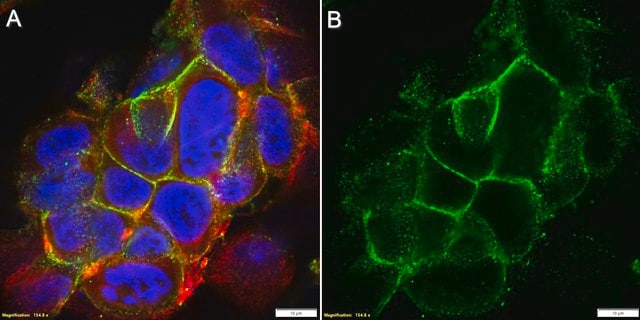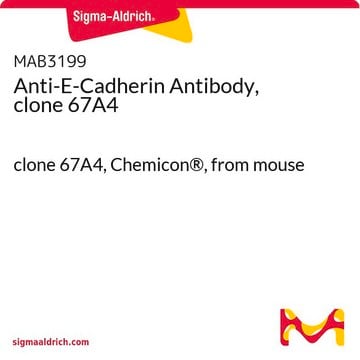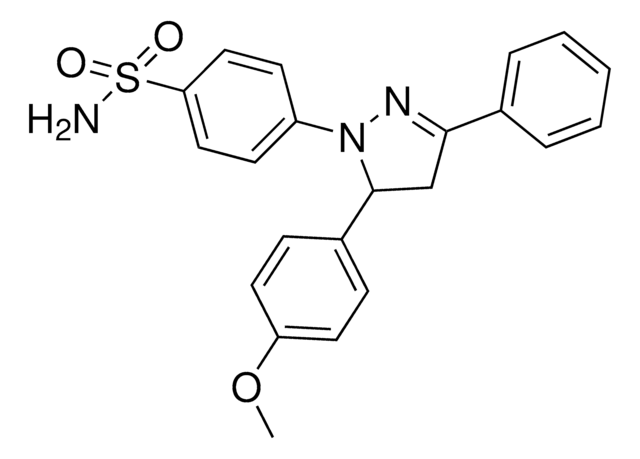MABT26
Anti-E-cadherin Antibody, clone DECMA-1
clone Decma-1, from rat
Synonim(y):
Anti-Anti-Arc-1, Anti-Anti-BCDS1, Anti-Anti-CD324, Anti-Anti-CDHE, Anti-Anti-ECAD, Anti-Anti-LCAM, Anti-Anti-UVO
About This Item
Polecane produkty
pochodzenie biologiczne
rat
Poziom jakości
forma przeciwciała
purified antibody
rodzaj przeciwciała
primary antibodies
klon
Decma-1, monoclonal
reaktywność gatunkowa
human, mouse
metody
flow cytometry: suitable
immunocytochemistry: suitable
immunohistochemistry: suitable
immunoprecipitation (IP): suitable
western blot: suitable
izotyp
IgG1κ
numer dostępu NCBI
numer dostępu UniProt
Warunki transportu
dry ice
docelowa modyfikacja potranslacyjna
unmodified
informacje o genach
human ... CDH1(999)
mouse ... Cdh1(12550)
Powiązane kategorie
Opis ogólny
Immunogen
Zastosowanie
Inhibition: A previous lot was used by an independent laboratory in inhibion studies, blocking E-cadherin associated cell adhesion. (Vestweber, 1985)
Flow Cytometry Analysis: A previous lot was used by an independent laboratory in flow cytometry applications. (Tang, 1994)
Cell Structure
Adhesion (CAMs)
Jakość
Western Blot Analysis: 1 µg/mL of this antibody detected E-Cadherin in 10 µg of A431 cell lysate.
Opis wartości docelowych
Postać fizyczna
Przechowywanie i stabilność
Handling Recommendations: Upon receipt and prior to removing the cap, centrifuge the vial and gently mix the solution. Aliquot into microcentrifuge tubes and store at -20°C. Avoid repeated freeze/thaw cycles, which may damage IgG and affect product performance.
Komentarz do analizy
A431 cell lysate
Inne uwagi
Oświadczenie o zrzeczeniu się odpowiedzialności
Not finding the right product?
Try our Narzędzie selektora produktów.
Kod klasy składowania
12 - Non Combustible Liquids
Klasa zagrożenia wodnego (WGK)
WGK 2
Temperatura zapłonu (°F)
Not applicable
Temperatura zapłonu (°C)
Not applicable
Certyfikaty analizy (CoA)
Poszukaj Certyfikaty analizy (CoA), wpisując numer partii/serii produktów. Numery serii i partii można znaleźć na etykiecie produktu po słowach „seria” lub „partia”.
Masz już ten produkt?
Dokumenty związane z niedawno zakupionymi produktami zostały zamieszczone w Bibliotece dokumentów.
Klienci oglądali również te produkty
Nasz zespół naukowców ma doświadczenie we wszystkich obszarach badań, w tym w naukach przyrodniczych, materiałoznawstwie, syntezie chemicznej, chromatografii, analityce i wielu innych dziedzinach.
Skontaktuj się z zespołem ds. pomocy technicznej

















